Shining a Light on Delegate Travel: The Missing Link to a Low-Carbon Events Industry
Venues can cut plastic and switch to renewables, yet 90% of event emissions still slip through the cracks. Why? Because organisers aren’t measuring delegate travel. It’s time to face the blind spot and fix it. Without this data, even the best sustainability efforts risk missing their true impact, which is where smarter tools and approaches come in.
CARBON FOOTPRINTEVENTS
Mark Haley
10/9/20255 min read


Introduction: The Blind Spot in Event Sustainability
When you read most event sustainability reports, you’ll see sections on waste reduction, energy efficiency, and catering choices. You might even find detailed stats on recycling rates or kilowatt-hours saved.
But here’s what’s often missing, the actual carbon impact of how delegates got to the event.
That’s not because organisers don’t care; it’s because they usually don’t know. Across the global events industry, reliable data on delegate travel patterns is scarce. In many cases, it’s based on guesswork or industry averages, not actual measurements.
This is the industry’s biggest blind spot, and until we fix it, we’re working in the dark. We can’t meaningfully reduce travel emissions if we don’t know where people are coming from, how they’re travelling, or why they made those choices.
1. Why Travel Data Matters More Than Anything Else
Let’s start with a simple truth: for most large events, delegate travel accounts for the majority of total emissions, often 70–90%. You can power your venue with renewables, compost all food waste, and eliminate single-use plastics, but if 10,000 delegates fly in from overseas, the carbon footprint will still be enormous.
That’s why travel data is not just another line item in sustainability reporting, it’s the foundation. Without it:
You can’t calculate your true Scope 3 emissions.
You can’t see which interventions are actually reducing impact.
You can’t credibly claim progress toward net zero.
The “Best Guess” Problem
Right now, many organisers rely on estimations:
Assume X% of attendees are local.
Assume Y% arrive by air, Z% by rail.
Apply average distances and standard emissions factors.
While this gives a ballpark figure, it doesn’t reveal real behaviour patterns. You might believe most of your European attendees are flying, when in fact many are driving. Or you might discover that a small but influential segment of your audience is responsible for a disproportionate share of emissions.
Across the global events industry, reliable data on delegate travel patterns is scarce.
2. What We Could Do With Better Data
If you knew exactly where your delegates were coming from and how they were getting to your event, you could:
Optimise venue location to minimise total travel distance.
Target specific high-emission travel corridors with incentives for lower-carbon alternatives.
See the impact of behaviour-change campaigns in real time.
Offer tailored travel advice and discounts to different attendee segments.
Better still, you could prove your event’s progress to sponsors, regulators, and delegates, with hard numbers, not estimates.
3. Why We Don’t Have the Data...Yet
So why is travel data so hard to come by?
1. It’s Not Built Into Registration
Most event registration forms collect contact details, payment, and maybe dietary preferences, but rarely travel origin or mode of transport. This is a missed opportunity.
2. Organisers Fear Adding Friction
Some worry that asking about travel will make registration longer or cause drop-off. But when the questions are simple and relevant, the impact is minimal, especially if attendees see the benefit.
3. Post-Event Surveys Are Too Late
By the time you send a sustainability survey after the event, many delegates won’t respond, and those who do may not recall their exact travel details accurately.
4. Building Data Collection Into the Event Journey
The most effective way to close the data gap is to capture travel intent at the earliest possible stage, during registration.
At Bizumi, we recommend a two-step approach:
Origin and mode
Ask for the delegate’s home city and intended travel mode (air, rail, coach, car, active travel).Flexibility check
Ask if they would consider alternative travel modes if cost, time, or convenience were equal or better.
These two questions provide a baseline dataset that can be refined later with actual booking or travel data.
Keeping It Simple and Valuable
The trick is to make these questions fast to answer and show delegates why you’re asking. A simple note like:
“We ask about your travel so we can improve sustainable transport options and offer discounts for low-carbon choices.”
...turns it from an admin task into a value-add.
One of the reasons some organisers avoid detailed travel data collection is fear, fear that the numbers will look bad.
5. Turning Data Into Action
Collecting data is only the first step. The real power comes from acting on it.
1. Venue Selection Intelligence
With a clear picture of where your audience is travelling from, you can choose venues that reduce total travel emissions. Sometimes moving an event just 50 miles can shift thousands of journeys from air to rail.
2. Targeted Travel Incentives
If your data shows a significant cluster of attendees flying short-haul from Paris to London, you can target them with a discounted Eurostar package and a comparison of travel times and emissions.
3. Real-Time Behavioural Nudges
Platforms like Bizumi can integrate live travel data to suggest low-carbon options during booking. This might be as simple as: “Did you know? Travelling by train from Manchester to Birmingham for this event saves 96% CO₂ compared to flying, and arrives 15 minutes earlier.”
4. Measuring Impact Over Time
Once you have baseline travel data, you can track the effects of your interventions from one event to the next, building a credible story of year-on-year improvement.
6. The Tech and Partnerships Driving Change
The events industry is starting to catch up with other sectors in using data for behaviour change.
Event:decision + You. Smart. Thing
This partnership automates audience travel data collection and provides personalised low-carbon journey options.Destination Management Platforms
Amsterdam&Partners’ Visitor Insight platform integrates cultural, transport, and accommodation data to manage flows and predict demand.Bizumi
Goes further by linking destination optimisation, live transport data, and emissions scoring in one tool, giving organisers both the insight and the influence to change behaviour.
7. Overcoming the Fear of Data Transparency
One of the reasons some organisers avoid detailed travel data collection is fear, fear that the numbers will look bad. But here’s the truth:
Without a baseline, you can’t measure improvement.
Sponsors and regulators value transparency over perfection.
Delegates respect honesty, especially when it’s paired with a credible plan for change.
Think of it like a fitness tracker: you can’t improve your health without first stepping on the scale.
8.The B-Corp View: Accountability as a Competitive Advantage
From a B-Corp perspective, data transparency isn’t just compliance, it’s a trust-building exercise.
People
Delegates see that you care enough to measure and improve their travel experience.Planet
You’re targeting the most impactful emissions source with evidence-based action.Profit
Sponsors see you as a leader in sustainable event planning, increasing your appeal for partnerships.
Bizumi’s philosophy is that data is not a burden; it’s the missing ticket to designing better events for everyone.
9. Practical Steps to Close the Data Gap
Here’s a Bizumi recommended starting plan for any organiser:
Add two travel questions to registration (origin city and planned mode).
Explain why you’re asking — link it to better options and discounts.
Store and analyse the data securely.
Use it to influence: venue choice, travel incentives, marketing.
Report results — show stakeholders what’s changed.
Iterate annually — refine the questions, test new interventions.
Conclusion: From Guesswork to Ground Truth
Sustainable event planning without travel data is like navigating without a map. You might head in roughly the right direction, but you’ll waste time, miss opportunities, and risk going completely off course.
By making travel data collection a standard part of event registration — and pairing it with tools like Bizumi to act on the insights, we can finally turn sustainability from an abstract goal into a measurable, manageable reality.


